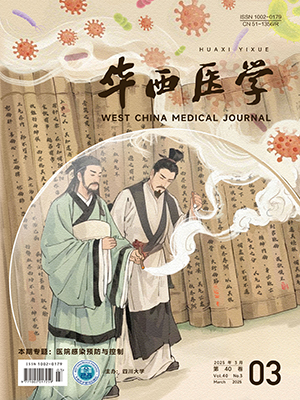Citation: REN Xiaobing, CHA Mei, LIU Yanyin, YU Ping, HE Xueping, WEI Ming. Comparative study among three methods on surface disinfection in Intensive Care Unit. West China Medical Journal, 2017, 32(3): 357-360. doi: 10.7507/1002-0179.201702041 Copy
Copyright © the editorial department of West China Medical Journal of West China Medical Publisher. All rights reserved
-
Previous Article
Effect of monitoring-training-planning intervention on the prevention and control of catheter-associated urinary tract infection in Intensive Care Unit CHENLiping, LEI Xibing, SUN Rui, TANG Yan, TAN Muyang -
Next Article
Targeted monitoring of nosocomial infection in comprehensive Intensive Care Unit in a tertiary general hospital JIANGDongping, GU Chengwu, LI Yanxia, LIANG Yuping




